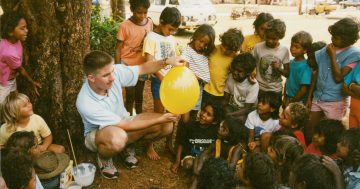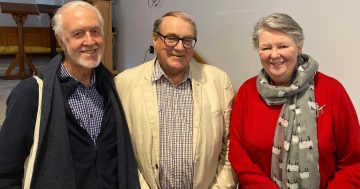As a kid growing up in the leafy, benign suburbs of Canberra, there was time to dream. Sure, I was supposed to be training as a child prodigy pianist, but when I wasn’t wandering the Brutalist halls of the Canberra School of Music, I was doing what every kid does – reading books, imagining, wondering.
Why can’t I fly? Why is Rick Astley on Video Hits… again? Why don’t they make houses out of Kit Kats?
Kids are full of curiosity, dreams and quirky questions. Maintaining this curiosity is one of life’s great challenges.
We are born to dream, to be curious, and to ask questions about the world around us. But how can we keep that spark of curiosity burning?
Somewhere amidst the musical chaos of my childhood, my parents took me to a small building in Ainslie. Exhibits were scattered around the space, staffed by volunteers, and I spent the next hour playing with unusual toys.
I remember a ball staying up in the air, kept there by a steady jet of air from a silver tube – it wobbled, it bounced, but it stayed. This was Questacon, Australia’s first interactive science exhibition, and it gave me a new sense of wonder – how does it work?
Questacon showed me that science and wonder go hand in hand.
As I grew older, the sense of wonder morphed and shifted, but wouldn’t go away.

Questacon – Science on the Move, in Bega August 12 to 19. Artwork by Scott Baker at Bega Valley Shire Library Service.
As a teenager, I’d hit the road with my friends and explore the caves around Canberra. We’d explore the dark mystery of these subterranean spaces, their stalactites glistening in the torchlight.
Dreaming in these caves led to curiosity – why are these beautiful structures here? Is there a system to this, or is it all down to chance?
Thankfully, you can study cave science, I did a degree in Geology, and fell in love with volcanoes, lava bombs, and cave-riddled karst country.
These days I explore how communities can use science to make decisions about social, environmental and economic issues.
Questacon is now a grand, multi-storey complex, and one of Canberra’s most popular tourist attractions. It also runs a traveling exhibition called ‘Science on the Move’, which is coming to the Bega Commemorative Civic Centre from August 12 to 19 during Science Week.
Kids can explore science in a fun, hands-on environment, asking questions like ‘how does a periscope work?’ and ‘what is a thongaphone?’
Science can help us to keep our curiosity burning for a lifetime.
Kate Burke is a sought after vocalist and musician based in Candelo and is completing her Masters in Science Communication at the Australian National University.
#Sponsored post












